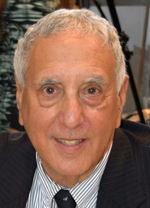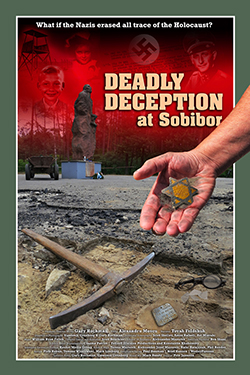By Donald H. Harrison

 SAN DIEGO – In 1987, the television movie Escape from Sobibor made quite an impression because, similar to the stories of the uprising in the Warsaw Ghetto and the movie Defiance in 2008, about the exploits of the Bielski Brothers and their partisan fighters, the TV movie disproved the calumny that Jews never fought but instead went like sheep to the Nazi slaughter.
SAN DIEGO – In 1987, the television movie Escape from Sobibor made quite an impression because, similar to the stories of the uprising in the Warsaw Ghetto and the movie Defiance in 2008, about the exploits of the Bielski Brothers and their partisan fighters, the TV movie disproved the calumny that Jews never fought but instead went like sheep to the Nazi slaughter.
Sobibor, built deep in the Polish woods where its purpose would be hard to detect, was constructed with one intention only: to kill Jews and other people despised by the Nazis. No inmate was sent there for work, except those forced to assist in the gruesome tasks of gassing, cremating, and burying the ashes of the dead. Even those sonderkommandos were not allowed to live very long. In all, an estimated 250,000 Jewish victims were murdered there.
The 300 escapees were jointly led by a Jewish cadre and some Soviet POWs who knew they would be murdered along with the Jews who had been transported to Sobibor from various countries in Western Europe. Of the 300 who escaped the death camp on October 14, 1943, only 52 survived—but that was 52 more than who would have survived had they stayed quietly in the camp.
The 103-minute documentary Deadly Deception at Sobibor, shows what happened to the camp after the escape. The work, painstakingly put together oveer a decade by filmmaker Gary Hochman, will be shown at the San Diego Jewish Film Festival at 10 a.m., Thursday, Feb 16, at the Lawrence Family Jewish Community Center, 4126 Executive Drive, La Jolla. Admission is free.
The escape upset the upper echelons of the Nazi hierarchy, who wanted to keep Sobibor and its sinister purpose a secret. So, they ordered that the camp be destroyed, covered over, and physically erased, which was done. Nazi barracks, the gas chambers, crematoria, were all knocked down, and the fields where the ashes from the crematoria were buried, was plowed over.
However, survivors told the gruesome tale of Sobibor. Captured Nazi records confirmed the mission of the death camp. Archaeologists decided to dig up further proof of what had happened there. Yoram Haimi, an Israeli archaeologist whose French Moroccan relatives were gassed at Sobibor, is the central character in the documentary, which is narrated offscreen by actress Tovah Feldman. Another important figure in the documentary is Philip Bialowitz, a Sobibor survivor.
Covering years of excavations, the documentary shows how Haimi organized the archaeological field work in concert with other archaeologists including Wojciech Mazurek of Poland and Ivar Schute of the Netherlands to find the gas chambers and the crematoria and to sort through artifacts that were sifted from the dirt taken out of pits. Some pendants bearing the words to the Shema prayer were found, probably worn around the necks of unsuspecting, naked Jews as they were marched shortly after their arrival to the “showers” that actually were gas chambers. Nazi coins, Jewish stars, key chains, gas pipes and “shower” heads were among the artifacts, along with many crushed human bones which at the urging of Rabbi Michael Shudrick of Warsaw were respectfully covered over with rocks.
During winters when freezing temperatures made excavation work impossible, Haimi searched for the histories of his own family members murdered at Sobibor. That journey took him to Paris from which they were taken and to various archives where Holocaust records are stored. Other excursions helped to flesh out the narrative.
*
Donald H. Harrison is editor emeritus of San Diego Jewish World. He may be contacted via donald.harrison@sdjewishworld.com